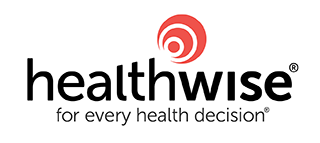Our Health Library information does not replace the advice of a doctor. Please be advised that this information is made available to assist our patients to learn more about their health. Our providers may not see and/or treat all topics found herein.
Epinastine Ophthalmic
(ep i nas' tine)
WHY is this medicine prescribed?
Ophthalmic epinastine is used to prevent itching of the eyes caused by allergic conjunctivitis (a condition in which the eyes become itchy, swollen, red, and teary when they are exposed to certain substances in the air). Epinastine is in a class of medications called antihistamines. It works by preventing the release of natural substances which cause allergic reactions in the eyes.
Are there OTHER USES for this medicine?
This medication may be prescribed for other uses; ask your doctor or pharmacist for more information.
HOW should this medicine be used?
Ophthalmic epinastine comes as a solution (liquid) to instill in the eyes. It is usually instilled twice a day. Use epinastine eye drops at around the same times every day, usually morning and evening. Follow the directions on your prescription label carefully, and ask your doctor or pharmacist to explain any part you do not understand. Use epinastine eye drops exactly as directed. Do not use more or less of them or use them more often than prescribed by your doctor.
Epinastine eye drops are only for use in the eyes. Do not swallow this medication.
Epinastine eye drops control the itching of allergic conjunctivitis only when they are used regularly. Epinastine eye drops will not work if you use them only when you experience symptoms. Continue to use epinastine eye drops even if you feel well. Do not stop using epinastine eye drops without talking to your doctor.
When you apply epinastine eye drops, be careful not to let the tip of the bottle touch your eye, fingers, face, or any surface. If the tip does touch another surface, bacteria may get into the eye drops. Using eye drops that are contaminated with bacteria may cause serious damage to the eye or loss of vision. If you think your eye drops have become contaminated, call your doctor or pharmacist.
To instill the eye drops, follow these steps:
- Wash your hands thoroughly with soap and water.
- Check the dropper tip to make sure that it is not chipped or cracked.
- Avoid touching the dropper tip against your eye or anything else; eye drops and droppers must be kept clean.
- While tilting your head back, pull down the lower lid of your eye with your index finger to form a pocket.
- Hold the dropper (tip down) with the other hand, as close to the eye as possible without touching it.
- Brace the remaining fingers of that hand against your face.
- While looking up, gently squeeze the dropper so that a single drop falls into the pocket made by the lower eyelid. Remove your index finger from the lower eyelid.
- Close your eye for 2 to 3 minutes and tip your head down as though looking at the floor. Try not to blink or squeeze your eyelids.
- Place a finger on the tear duct and apply gentle pressure.
- Wipe any excess liquid from your face with a tissue.
- If you are to use more than one drop in the same eye, wait at least 5 minutes before instilling the next drop.
- Replace and tighten the cap on the dropper bottle. Do not wipe or rinse the dropper tip.
- Wash your hands to remove any medication.
What SPECIAL PRECAUTIONS should I follow?
Before using epinastine eye drops,
tell your doctor and pharmacist if you are allergic to epinastine or any other medications.
tell your doctor and pharmacist what other prescription and nonprescription medications, vitamins, nutritional supplements, and herbal products you are taking. Your doctor may need to adjust the doses of your medications or monitor you carefully for side effects.
tell your doctor if you are pregnant, plan to become pregnant, or are breast-feeding. If you become pregnant while using epinastine, call your doctor.
tell your doctor if you wear contact lenses. You should not wear contact lenses if your eyes are red or irritated, and you should not use epinastine eye drops to treat irritation that you think may be caused by contact lenses. You should also not instill epinastine eye drops while you are wearing contact lenses. Remove your contact lenses before you instill epinastine eye drops and do not replace them for at least 10 minutes afterward. You may find it convenient to instill the eye drops before you put your lenses on in the morning and after you take them out in the evening.
What SPECIAL DIETARY instructions should I follow?
Unless your doctor tells you otherwise, continue your normal diet.
What should I do IF I FORGET to take a dose?
Instill the missed dose as soon as you remember it. However, if it is almost time for the next dose, skip the missed dose and continue your regular dosing schedule. Do not instill a double dose to make up for a missed one.
What SIDE EFFECTS can this medicine cause?
Epinastine eye drops may cause side effects. It may be hard to tell if the symptoms you experience are side effects of epinastine eye drops or are caused by allergies. Tell your doctor if any of these symptoms are severe or do not go away:
- burning or itchy eyes
- swollen eyelids
- eye redness
- headache
- runny nose
- cough
Some side effects can be serious. If you experience either of the following symptoms, call your doctor immediately:
- sore throat
- fever, chills, and other signs of infection
Epinastine eye drops may cause other side effects. Call your doctor if you have any unusual problems while using this medication.
If you experience a serious side effect, you or your doctor may send a report to the Food and Drug Administration's (FDA) MedWatch Adverse Event Reporting program online (http://www.fda.gov/Safety/MedWatch) or by phone (1-800-332-1088).
What should I know about STORAGE and DISPOSAL of this medication?
Keep this medication in the container it came in, tightly closed, and out of reach of children. Store it at room temperature and away from excess heat and moisture (not in the bathroom).
Unneeded medications should be disposed of in special ways to ensure that pets, children, and other people cannot consume them. However, you should not flush this medication down the toilet. Instead, the best way to dispose of your medication is through a medicine take-back program. Talk to your pharmacist or contact your local garbage/recycling department to learn about take-back programs in your community. See the FDA's Safe Disposal of Medicines website (http://goo.gl/c4Rm4p) for more information if you do not have access to a take-back program.
It is important to keep all medication out of sight and reach of children as many containers (such as weekly pill minders and those for eye drops, creams, patches, and inhalers) are not child-resistant and young children can open them easily. To protect young children from poisoning, always lock safety caps and immediately place the medication in a safe location – one that is up and away and out of their sight and reach. http://www.upandaway.org
What should I do in case of OVERDOSE?
In case of overdose, call the poison control helpline at 1-800-222-1222. Information is also available online at https://www.poisonhelp.org/help. If the victim has collapsed, had a seizure, has trouble breathing, or can't be awakened, immediately call emergency services at 911.
What OTHER INFORMATION should I know?
Keep all appointments with your doctor.
Do not let anyone else use your medication. Ask your pharmacist any questions you have about refilling your prescription.
It is important for you to keep a written list of all of the prescription and nonprescription (over-the-counter) medicines you are taking, as well as any products such as vitamins, minerals, or other dietary supplements. You should bring this list with you each time you visit a doctor or if you are admitted to a hospital. It is also important information to carry with you in case of emergencies.
This report on medications is for your information only, and is not considered individual patient advice. Because of the changing nature of drug information, please consult your physician or pharmacist about specific clinical use.
The American Society of Health-System Pharmacists, Inc. represents that the information provided hereunder was formulated with a reasonable standard of care, and in conformity with professional standards in the field. The American Society of Health-System Pharmacists, Inc. makes no representations or warranties, express or implied, including, but not limited to, any implied warranty of merchantability and/or fitness for a particular purpose, with respect to such information and specifically disclaims all such warranties. Users are advised that decisions regarding drug therapy are complex medical decisions requiring the independent, informed decision of an appropriate health care professional, and the information is provided for informational purposes only. The entire monograph for a drug should be reviewed for a thorough understanding of the drug's actions, uses and side effects. The American Society of Health-System Pharmacists, Inc. does not endorse or recommend the use of any drug. The information is not a substitute for medical care.
AHFS® Patient Medication Information™. © Copyright, 2024. The American Society of Health-System Pharmacists®, 4500 East-West Highway, Suite 900, Bethesda, Maryland. All Rights Reserved. Duplication for commercial use must be authorized by ASHP.
Selected Revisions: April 15, 2016.
This information does not replace the advice of a doctor. Ignite Healthwise, LLC disclaims any warranty or liability for your use of this information. Your use of this information means that you agree to the Terms of Use and Privacy Policy. Learn how we develop our content.
Healthwise, Healthwise for every health decision, and the Healthwise logo are trademarks of Ignite Healthwise, LLC.




